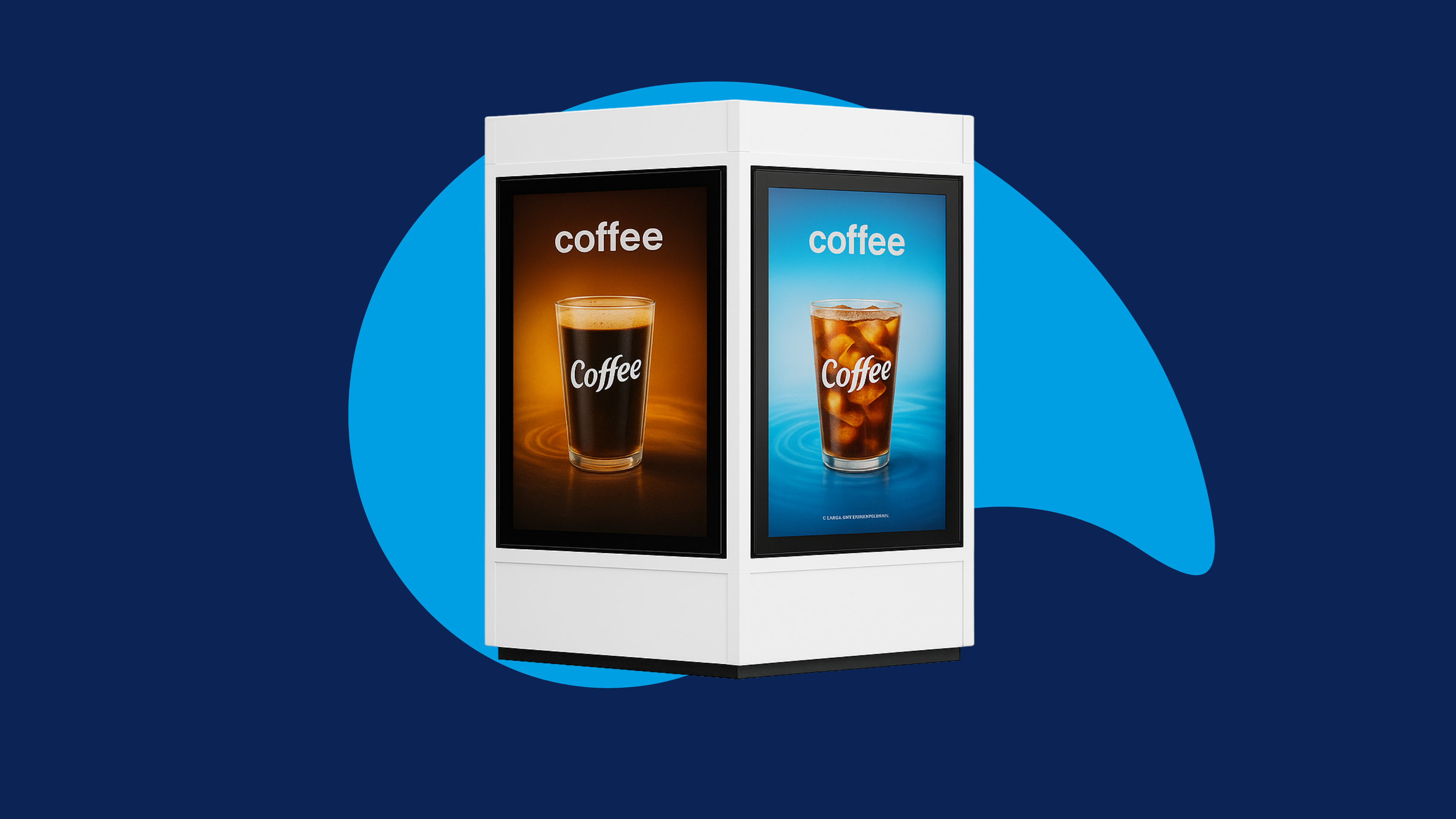

October, 2025
Out-of-home advertising has consistently proven to be an unbeatable channel for achieving massive reach and awareness. In 2026, this power will be further enhanced thanks to digitalization, programmatic, new measurement standards, dynamic creative optimization (DCO), and comparable sustainability.
DOOH, already in a mature stage, will be integrated into a true omnichannel mix (CTV, social, display, retail media…), with data synchronizing audiences and outcomes. The effect: smarter, more relevant, and measurable campaigns that turn every impression into a business opportunity.
What is DCO in today´s OOH?
DCO in DOOH is the ability to automatically modify the content of a digital ad based on contextual variables (weather, traffic, time, location, nearby events, mobility signals, etc.) and creative rules powered by real-time data, to ensure each ad is the most suitable for the situation and audience of that place and moment.
For example, on hot days, a creative highlights cold drinks; while if it rains, it highlights the option of ordering delivery. (We talk more about this on our blog: Dynamic Creative Optimization and OOH).
DCO, therefore, is no longer just a "striking test" but is becoming a standard feature within programmatic advertising, with improved operational and creative guidelines.
The fuel of DCO: data
Data has already become the main engine when designing effective advertising experiences, and will continue to be key for brands optimizing their real-time messaging and in better understanding their audiences in 2026.
1) Advanced data
Advanced data is high-quality, precise information that allows brands to better personalize their campaigns, gain deeper audience understanding, and optimize message delivery in real time. This type of data typically comes from direct sources or partnerships with strategic partners, always with explicit user consent, and differs from standard data in its ability to generate deeper, actionable insights.
Some of these are:
2) Standard data
Standard data is public or widely available information that provides contextual signals to adjust messages in a timely and relevant way. Although not as personalized or precise as advanced data, they are still essential to optimize communication, ensure campaign relevance, and improve the user experience in real time.
Among them stand out weather conditions, traffic and urban mobility, store openings and hours, crowd flows at spaces and/or public events, or air quality indexes and environmental alerts, among others.
Innovation in 2026 will not lie in the data itself, but in how it is orchestrated, integrated, and used, with a stronger programmatic focus, a more solid omnichannel convergence between CTV, social, and retail media, and the implementation of common frameworks for measurement and attribution.
Benefits of DCO in DOOH campaigns
Dynamic Creative Optimization (DCO) in DOOH allows adapting creativities in real time, delivering more relevant and personalized messages according to context and audience. This not only improves the user experience but also maximizes campaign efficiency, optimizing the budget and boosting results. Its main benefits are:
Trends already defining DOOH
1) True omnichannel
DOOH works as a bridge between physical and digital, integrating with CTV and retail media, and leveraging best practices in data and attribution across the mix. Its programmatic adoption continues to grow, and more advertisers strategically include it in their full-funnel plans.
2) Scale + precision
For years, OOH meant massive reach but little segmentation. Today, programmatic technology allows combining the best of both worlds:
This balance will be the competitive advantage for brands mastering DOOH in the coming years.
3) Diversification of screens and experiences
The DOOH of the future is not limited to displaying ads but will create experiences.
More spectacular formats and interactive actions (QR/NFC/Bluetooth…) will be used, as well as augmented reality to drive engagement and behavioral data.
In 2026, we will see a boom in:
DOOH screens are no longer just rectangular supports, and these new formats not only grab audience attention but also turn advertising into moments people want to share.
4) AI applied
AI is also transforming how DOOH campaigns are created and executed, making it far more efficient to generate dynamic creatives (DCO), real-time adaptations, and resizing for multiple formats, as well as more effective predictive analytics to identify audiences, locations, and key moments.
5) Measurement and attribution
The growth of DOOH demands clear, comparable metrics. Advertisers seek transparency to evaluate the impact of their investments and make data-based decisions, advancing toward global measurement standards that allow campaign comparison across different markets and formats.
These attribution models combine online/offline signals, store visits, and business results, among others, enabling real ROI calculation and adoption of more precise attribution models linking OOH with both digital and physical outcomes.
6) Mandatory sustainability
Environmental commitment is no longer optional. DOOH brands and operators are adopting technologies and practices to reduce their carbon footprint:
Planning based on carbon data by time slot and support, emission optimization per visible impression, and reporting aligned with the global media framework are no longer "extra" elements but have become key optimization variables.
The future of OOH is contextual, dynamic, and responsible
It is no longer just about bigger or more spectacular screens, but about data, precision, and immersive experiences that combine the physical and digital worlds like never before.
DOOH is no longer static: it is smart, adaptable, and measurable. Brands that integrate DOOH into their omnichannel strategy, adopt AI-powered DCO, and operate under measurement and sustainability standards will be the ones to maximize their investment and stand out in an environment saturated with generic messages.
Do you want to implement DCO/DOOH campaigns with these practices and standards?
Let’s talk.